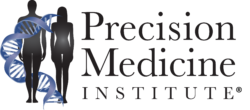Multimillion dollar investment into theranostic research emphasizes the potential for precision medicine advancements in nuclear medicine
Ohio-based Cardinal Health recently announced a multimillion dollar investment into growing its research and capabilities in the field of radiopharmaceuticals. Among Cardinal Health’s specialties, it develops novel pharmaceuticals and treatments and is one of the largest healthcare companies in the world.
Cardinal Health’s recently announced investment focuses on emerging technologies in nuclear medicine. Until recently, nuclear medicine focused primarily on diagnosing. Nuclear medicine uses molecules that are made to be slightly radioactive and are used by certain organs, tissues, or even diseased cells. The radioactivity of these molecules allows them to be tracked as they move through the body, emitting information about how tissues are functioning or indicating the presence of certain diseases such as cancers.
Nuclear medicine has been described as an opposite to traditional radiographic imaging. While most X-ray or CT imaging looks at the anatomical structure of a patient, nuclear medicine looks at how parts of the patient’s body are functioning.
Olson on Theranostics and Radiopharmaceuticals
Radiopharmaceuticals are an emerging technology within the area of nuclear medicine that not only allows radioactive molecules to be tracked through the body, but also allows these radioactive molecules to carry medications that can be directly released into the tissues that these molecules target. Radiopharmaceuticals have been referred to as a type of “theranostics”, a term used to describe something that is a combination of both a therapeutic and a diagnostic.

Tiffany Olson
Cardinal Health
“Very simply put, theranostics is a therapeutic, which means ‘help fix me,’ and a diagnostic, which is ‘tell me what’s wrong,’” said Tiffany Olson, President of Nuclear and Precision Health Solutions at Cardinal Health since 2013. “[Theranostics] combines those—a diagnostic and a therapeutic—for an individual and goes down to the cellular level, so patients get exactly what they need. It’s an incredibly precise way to treat different diseases.”
The potential applications for theranostics in treating patient-specific diseases make it an ideal area of research for precision medicine. Some theranostic-type treatments are becoming available, however, radiopharmaceuticals are expected to significantly increase the need for nuclear medicine in the short-term future.
“The nuclear medicine and molecular imaging industry is at a tipping point,” stated Olson as part of the recent announcement. “Over the next several years, our industry is estimated to triple.” The global nuclear medicine industry is projected to grow from $5 billion in 2018 to $14 billion in 2025 and up to $30 billion by 2030.
The Novel Concept of Nuclear Medicine Hubs
The Cardinal announcement maps to Indiana’s “nuclear medicine cluster,” where the Indianapolis Business Journal in late July reported that international business development activities, including Cardinal Health’s, have invited “more than $160 million in the past two years to build or expand radiopharmaceutical operations.” It is here that Cardinal will build a large operation for research, development, and contract manufacturing of radiopharmaceuticals.
All of this is occurring near Purdue University’s nuclear pharmacy program, which is said to be the largest of its kind in the US, according to the IBJ. These developments also are occurring at a time when the U.S. Food and Drug Administration has approved two molecular imaging drugs for the treatment of prostate cancer. The Indiana location, according to Cardinal’s Olson, helps the company meet the logistical challenges involved with radiopharmaceuticals.
While radiopharmaceuticals offer unique potential benefits in providing precision medicine treatments, “the half-life is what makes nuclear medicine unique, compared to other types of pharmaceuticals,” explained Olson. “In nuclear medicine, our products decay at the rate of their half-life; some are as short as 10 minutes … and we have others that are longer at 11 days. We need access to an international airport, and Indy has the second largest FedEx hub in the world, so we are able to get our products wherever they need to go quickly, being right here at the Crossroads of America,” Olson said. “In our business, speed and moving products when we’re finished manufacturing them to get into the patient is so important.”
Ultimately, more research, discovery, and evidence of the safety and efficacy of new precision medicine treatments, such as radiopharmaceuticals, will enable hospitals to offer treatments that are tailored specifically to the unique needs of patients. As work continues at the nuclear medicine hub in Indiana and at other medical research centers in the U.S., oncologists and pathologists will be better informed to anticipate the public health benefits.
—Caleb Williams
Related Information:
Cardinal Health Adds Muscle to Indy Nuclear Medicine ‘Hub’
Radiotheranostics: A roadmap for future development
Cancer-fighting nuclear medicine firms find home in central Indiana
Purdue University Nuclear Pharmacy Programs News and Updates
FDA approves second PSMA-targeted PET imaging drug for men with prostate cancer
